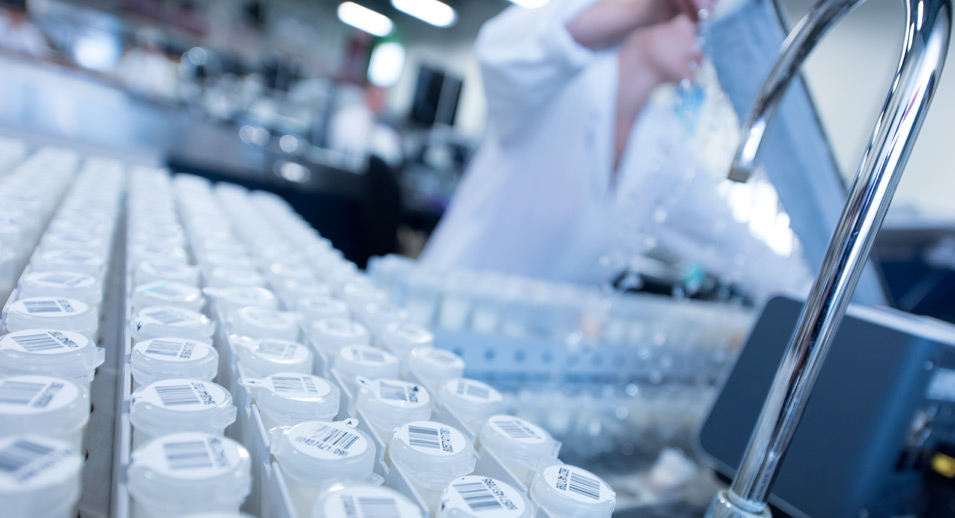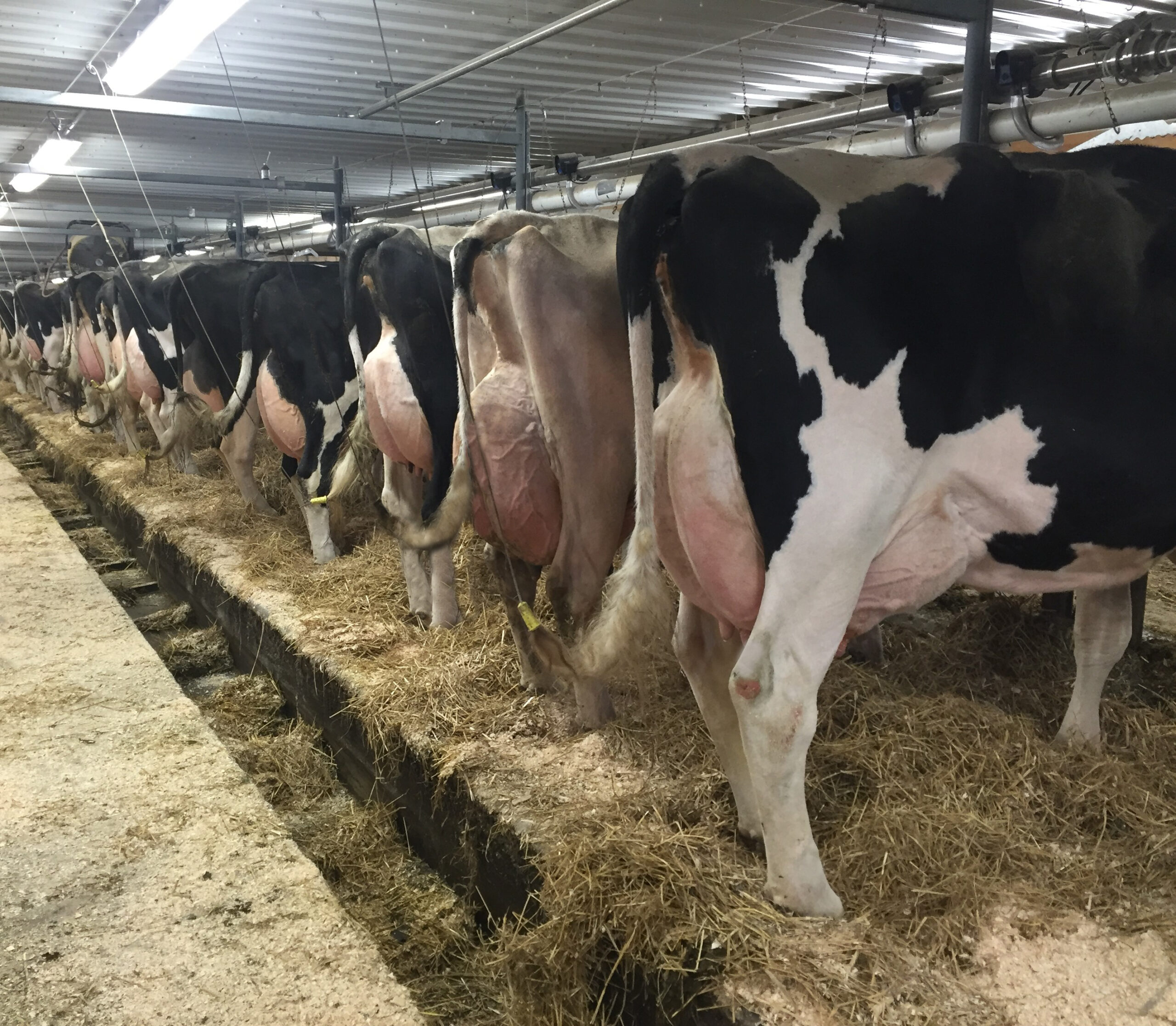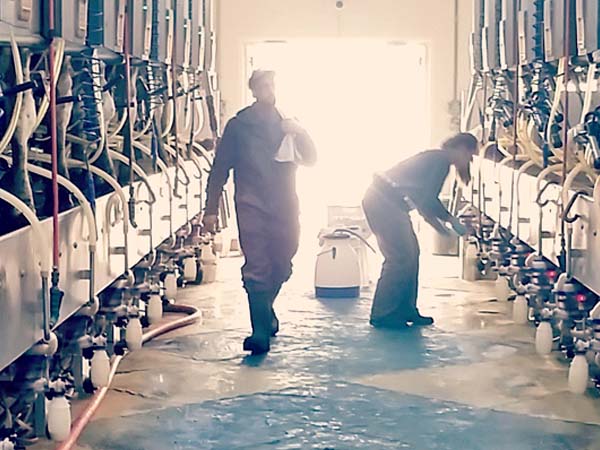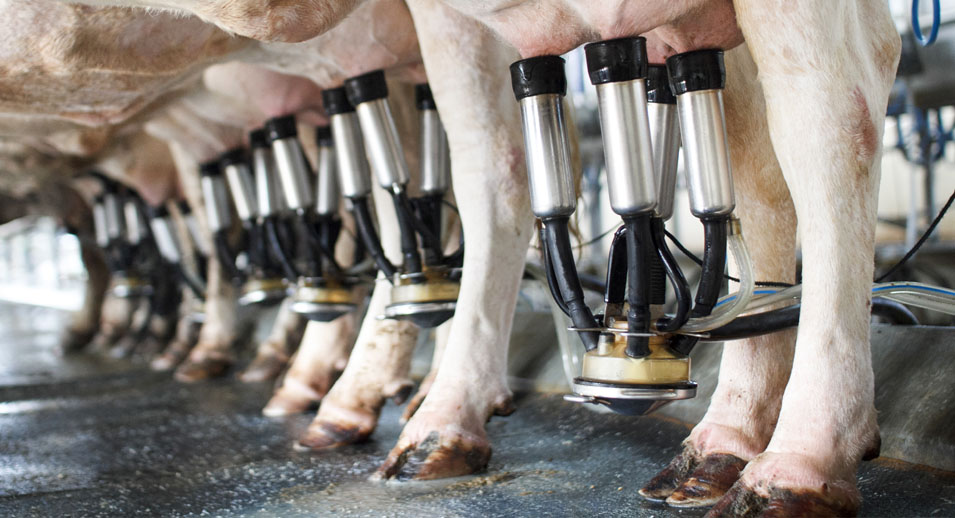Are these targets within your reach?
- July 9, 2021
- Le Producteur de Lait Québécois Magazine
Over the last two decades, the quality of the milk produced on Quebec’s dairy farms has improved significantly. The introduction of quality premiums, determined by the frequency of higher bacterial and somatic cell counts, has effectively created added value for high quality milk.

What are milk quality premiums?
There is a first premium of $0.50/hl of milk shipped for milk that has an average total bacterial count equal to or lower than 20 000 IBC/ml combined with an average somatic cell count equal to or lower than 200 000 SC/ml for the current month.
In Example 1, the average bacterial count is below 20 000 IBC/ml and the average SCC is below 200 000 cells/ml. The milk thus qualifies for the first premium of $0.50/hl; at the end of April the premium will be applied on the total volume of milk shipped during that month.
A second premium, cumulative to the first, is available to producers who have milk analysis results of 15 000 TB/ml or less combined with results of 150 000 SC/ml or less. Premium payments are drawn from a fund to which both processors and producers contribute, based on the total volume of milk processed in Quebec each month. The processing plants pay the first $0.03/hl on all milk billed, and Quebec’s dairy producers (PLQ) add an equal amount to that. This sum is redistributed among the producers who qualify for the second premium. The amount per hectolitre varies slightly from month to month. According to the 2020 Annual Report by the PLQ, the premium paid last year varied from $0.1491 to $0.2876 per hectolitre.
| Bacteria | Somatic cells | |
| 1st premium: $0.50 /hl | ≤ 20 000 IBC/ml | ≤ 200 000 cells/ml |
2nd variable premium (between $0.1491 and $0.2876/hl) in addition to the first $0.50 /hl Cumulative total = $0.7/hl | ≤ 15 000 IBC/ml | ≤ 150 000 cells/ml |
Example 1
| Sampling date | TB (000/ml) | SC (000/ml) |
| 2021-04-01 | 246 | |
| 2021-04-03 | 203 | |
| 2021-04-05 | 184 | |
| 2021-04-07 | 155 | |
| 2021-04-09 | 222 | |
| 2021-04-11 | 208 | |
| 2021-04-13 | 3 | |
| 2021-04-15 | 164 | |
| 2021-04-17 | 186 | |
| 2021-04-19 | 6 | 253 |
| 2021-04-21 | 206 | |
| 2021-04-23 | 149 | |
| 2021-04-25 | 151 | |
| 2021-04-27 | 8 | 160 |
| 2021-04-29 | 181 | |
| Monthly average | 6 | 190 |
Example 2
| Sampling date | TB (000/ml) | SC (000/ml) |
| 2021-05-01 | 77 | |
| 2021-05-03 | 203 | |
| 2021-05-05 | 98 | |
| 2021-05-07 | 4 | |
| 2021-05-09 | 132 | |
| 2021-05-11 | 125 | |
| 2021-05-13 | 11 | 155 |
| 2021-05-15 | 164 | |
| 2021-05-17 | 186 | |
| 2021-05-19 | 5 | 112 |
| 2021-05-21 | 102 | |
| 2021-05-23 | 149 | |
| 2021-05-25 | 151 | |
| 2021-05-27 | 7 | 160 |
| 2021-05-29 | 181 | |
| Monthly average | 6.75 | 142 |
In the calculations for both premiums, the arithmetic mean of the monthly results of the bacteriological and somatic cell analyses are taken into account. In Example 2, the average bacterial count is below 15 000 TB/ml and the average SCC is below 150 000/ml, which means that the requirements for both premiums are met.
To be eligible for the first and second premiums, bacterial and somatic cell counts must be below the established thresholds. If one or the other of these standards is not met, the milk does not qualify for the premiums. In Example 3 below, the average bacterial count is above 20 000/ml and average SCC is below 200 000. In this case then, no premiums are paid because one of the standards has not been met, since the average result for total bacteria exceeds 20 000.
Example 3
| Sampling date | TB (000/ml) | SC (000/ml) |
| 2021-03-02 | 183 | |
| 2021-03-04 | 147 | |
| 2021-03-06 | 143 | |
| 2021-03-08 | 6 | 125 |
| 2021-03-10 | 165 | |
| 2021-03-12 | 114 | |
| 2021-03-14 | 192 | |
| 2021-03-16 | 10 | 213 |
| 2021-03-18 | 190 | |
| 2021-03-20 | 189 | |
| 2021-03-22 | 14 | 214 |
| 2021-03-24 | 266 | |
| 2021-03-26 | 195 | |
| 2021-03-28 | 60 | 277 |
| 2021-03-30 | 316 | |
| Monthly average | 22.5 | 195 |
Yes, but how much money do the premiums bring in?
Taking the month of January as an example, the second premium added $0.1890 for every hectolitre of milk produced during the month. The two premiums combined thus added $0.6890 per hectolitre of milk to the producer’s paycheck.
For a producer with a herd of 70 cows, who ships an average of 570 hl per month, the premiums represent nearly $393 per month. What would you do with that extra money? There’s no shortage of ideas: pay a few unforeseen expenses, reimburse your debts, or maybe pay for a few luxuries or a holiday. The choice is yours, but the money is within reach.
What are the key elements to consider?
Washing performance must meet or exceed standards set by equipment manufacturers. Hot water is an absolute must and cleaning products must be suited to the type of equipment and potable water supply used on the farm.
Milk must be cooled as quickly as possible after milking – it’s the secret to success.
Cleanliness of cows, milking equipment, milking parlour, etc.
Mammary health status in the herd must be assessed with the help of your veterinarian to clarify the situation and develop an action plan that will enable you to attain your goals.
How does one improve milk quality?
If you want to improve your milk quality results but don’t know where to start, it’s a good idea to consult a professional to make sure you make the right decisions, and avoid making bad ones. To improve your somatic cell counts, talk to your veterinarian. To improve your bacterial counts, confer with your milk quality advisor.
If the results of your quality analyses are not as good as you hoped, your milk quality advisor can conduct a number of tests to help you identify solutions to reach your milk quality targets.
Your advisors can guide you in considering all the factors involved and help you prioritize the actions needed to meet your goals. Once your action plan is in place, you will need to implement it and evaluate the results periodically.
Conclusion
Achieving and maintaining performance goals requires ongoing commitment. There is no room for “it’s good enough” or “this is how we’ve always done it”, etc. Full control over every relevant parameter is crucial.
Teamwork is essential. Your quality advisor, veterinarian, and equipment manufacturers play an important role; the combined efforts of all team members will be instrumental in meeting these quality standards.
In short, any producer who prioritizes good milk quality will be able to meet the standards for quality premiums by optimizing his or her performance in respect of washing, cooling, cleanliness and udder health. Your team of service providers has all the tools and support you need to achieve that goal.
The keys to success: a sound action plan and consistent implementation.

Dany Quirion, conseiller senior à la qualité du lait, Lactanet
Marc-André Gravel, responsable au contrôle de la qualité et aux contrôles techniques, PLQ










